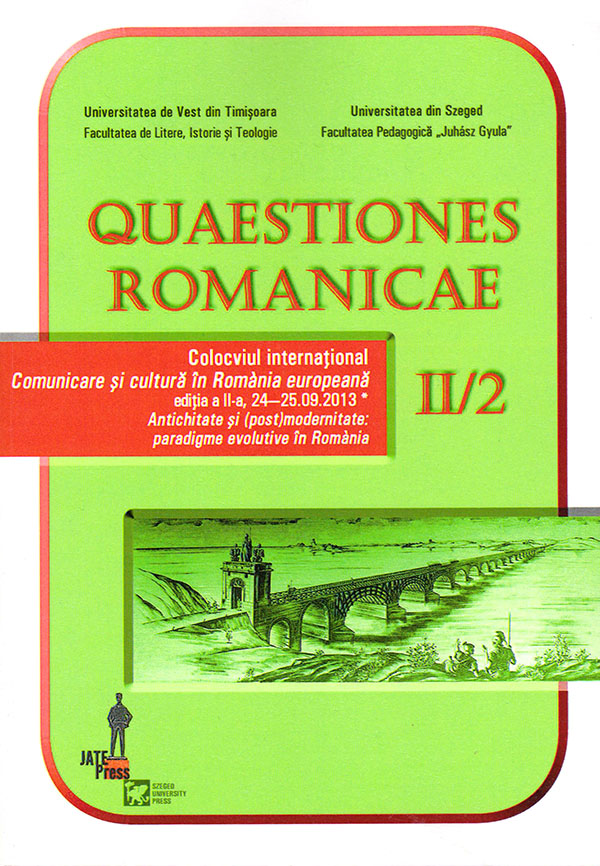Mitos de la antigüedad en la novela postmoderna o transmoderna de Enrique Vila-Matas
Abstract: (Antiquity Myths in Enrique Vila-Matas’s postmodern or transmodern novel) The echoes of the classical culture can be observed in the postmodern or transmodern novels of Enrique Vila-Matas, because the Literature generally benefits of an intense life in the very attentively readers’ work which is the large Text of Universals’ Literature. The Antiquity’s myths irradiate of this reticulum quotes and inedited interpretations, they disseminate penetrating others myths hidden in the ordinary and leading to the most remote origins, to the most remote homelands, each person’s Atlántida. Resuming everything in its symbolic figure, we selected Homer, a present archetype in the writers’ novels. Homer is watching the dark hole of World and he is dreaming diaphanous, ethereal, airy images, full of light, colours, life. But this is a strange life, a life beyond the abandoned bodies, beyond the terrestrial realities, beyond the World. Homer is telling the modern odyssey, surrounded by the circle of a faithful and constant public, a public which is devoted to the story and which is faithful to this category of the literature. This literature is suggestive and challenging, but it does not offer everything to the reader, and it also drives to venture his own adventures, his own vertical voyages in order to find the islands of happiness.
Keywords : Antiquity, Postmodernity, Transmodernity, Enrique Vila-Matas, Ancients Myths
Resumen: Los ecos de la cultura clásica se pueden percibir en la narrativa postmoderna o transmoderna de Enrique Vila-Matas, ya que la literatura en su conjunto disfruta de una vida muy intensa en la obra de este lector muy atento del gran Texto que es la literatura universal. Además, los mitos de la Antigüedad reverberan de esta red de citas e interpretaciones inéditas, se esparcen infundiendo otros mitos ocultados en la cotidianidad y conduciendo a los más lejanos orígenes, a las más lejanas patrias, las Atlántidas de cada persona. Para resumir todo en una figura simbólica, hemos elegido a Homero, un arquetipo presente en la narrativa del escritor. Homero está mirando el hueco negro del mundo y está soñando con imágenes diáfanas, etéreas, incorpóreas, llenas de luz, de colores, de vida, pero una vida más allá de los cuerpos abandonados, más allá de las realidades terrenales, más allá del mundo y está contando la odisea moderna rodeado por el círculo de un público adicto y fiel, un público adicto al cuento y fiel a esta clase de literatura que sólo sugiere y provoca, pero no ofrece todo al lector, sino le empuja a emprender sus propias hazañas, sus propios viajes verticales para encontrar las islas de la felicidad.
Palabras clave: antigüedad, postmodernidad, transmodernidad, Enrique Vila-Matas, mitos antiguos.
